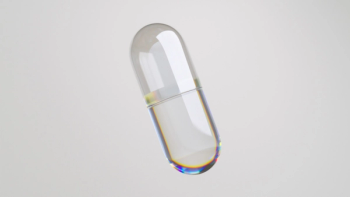
As nutraceutical and pharmaceutical firms compete for a bigger slice of the healthcare market, delivery innovations like pelletization will help them stand out
How pelletization can give the nutraceutical industry a boost, according to experts from Vantage Nutrition and ACG Capsules.
The level of awareness individuals have of their own health and well-being grew exponentially during the COVID-19 pandemic. This awareness fueled a shift from a reactive approach to health and personal care to a more proactive and predictive one.
The nutraceutical and pharmaceutical industries are now vying for a wider share of this growing base of health-conscious individuals. This has translated to greater innovation and an expanding portfolio of high-quality and convenient products aimed at improving consumer health.
The Advantages of Pelletization for Oral Supplements
The majority of nutraceutical supplements offered are available in an oral format. New technologies continue to pave the way for innovation when it comes to release modification and new product development.
Pelletization has proved to be a boon for nutraceutical providers, opening the door to a plethora of opportunities for the nutraceutical sector. It can offer suitable, cost-efficient solutions to multiple challenges, including efficacy, dosage, delivery, and absorption challenges.
Typically, the pellets found in supplements are small, free-flowing spherical or semi-spherical solid particles made up of fine powders or granules which then can be coated or encapsulated with other materials. They are used primarily for release modification of active ingredients and can therefore play a role in enhancing the efficacy of a supplement.
Pelletization can also provide a greater degree of flexibility with respect to the evolution and appearance of product formulations. It allows the separation of active ingredients into completely different dose strengths, without the need for method changes, and can be used to administer incompatible, biologically active substances all at once. It also offers the scope for immediate or controlled oral delivery.
Additionally, pellet formations can help to improve the absorption and distribution of actives. The coating applied during pelletization forms a protective layer, helping to mask the odor and unpleasant taste of active ingredients, improving palatability. This helps to increase consumer compliance, while the aesthetic appeal of the pellets enhances the distinction of the product, which can improve marketing efforts.
Emerging Innovations
These examples of the evolution and growth of pelletization over the last decade has nutraceutical innovators looking to the future. Developers are moving beyond simple pellet formulations and are exploring all the possible options, focusing on new and more effective technologies that can help to bring purer, more effective, and more complex products to market.
Traditionally, pellets have been used in product forms like sachets, capsules, and tablets. Pellets in capsules are widely accepted nowadays and offer the most scope for overall product modification, with the hard capsule acting as an excellent container to deliver the pellets to the desired site.
Sprinkle capsules have recently emerged as a new trend, aimed at people who have difficulty swallowing, including children and the elderly. These capsules carry the active content in pellet form, which can be sprinkled on food or juice.
Capsules that combine two separate delivery systems, like pellets and liquid formulation in a single unit, are another example of an innovation gaining momentum. One of the challenges the nutraceutical industry currently faces is how to deliver complex materials in way that enhances their effectiveness and ensures maximum absorption in an efficient manner. This novel technique can provide the means to deliver complex actives by incorporating them in their original form, whether in a liquid or a solid. They can deliver the active ingredients immediately (via liquid), and in a controlled manner (through solid pellets), simultaneously. This format also satisfies compatibility issues on an operational level by offering the choice of pellets with tiny capsules in liquid-filled capsules.
The Future
Pelletization is not a new technology, but it continues to be a revolutionary one when it comes to providing versatile delivery formats for nutraceuticals and pharmaceuticals alike. It has shown an immense scope for customization and modification in release patterns, as well as aesthetic appeal. With its significant potential for growth and brand extension, pelletization is set to continue providing significant benefits to manufacturers, consumers, and market players.
About the Authors
Surya Singh, PhD, is senior manager of product development at
Newsletter
From ingredient science to consumer trends, get the intel you need to stay competitive in the nutrition space—subscribe now to Nutritional Outlook.





